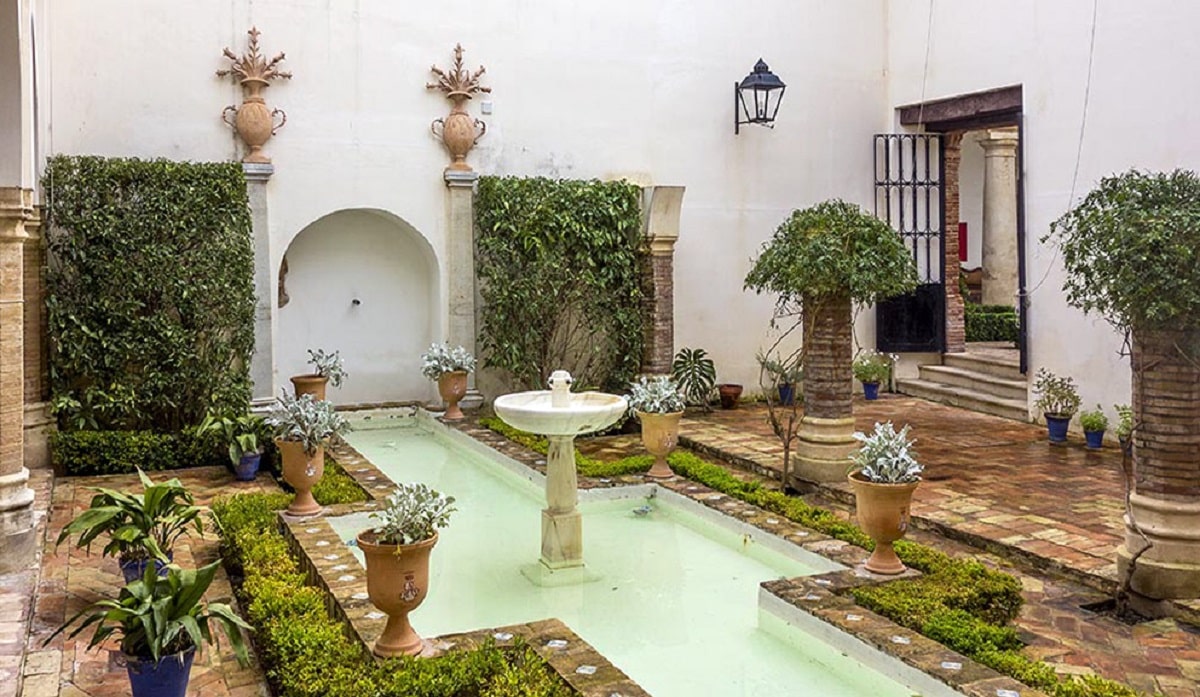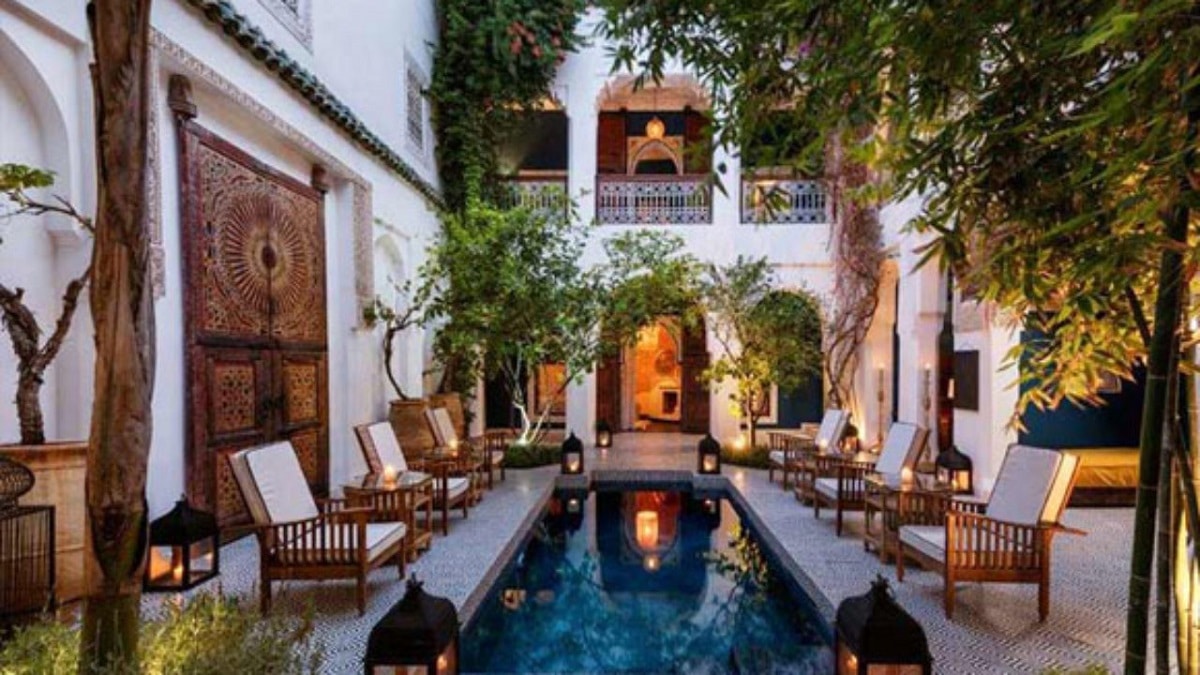
Landscaping and gardening are something that go hand in hand. The arab courtyards They are something that mix these two disciplines very well. These are places with great beauty that mix the culture of human art and nature to create great tourist value.
In this article we are going to tell you what the main characteristics of the Arab parties are, their history and importance.
Arab patios

Moorish patios are the perfect blend of shade and water themes. Its most famous and recognizable architectural design is epitomized by the Charbagh grid layout, with four small gardens separated by walkways or streams. A particular focus of this garden is that allows us to live a sensory experience thanks to the combination of water and aromatic plants.
In the Islamic world, the Arab courtyard is one of the most important areas, reflecting the so-called Yanna or Islamic Paradise. In this way, the Arabs endowed their gardens with what they considered the best features, resulting in a space of great beauty designed to give life to the senses.
A perfect example of an Islamic or Arabic garden in Spain is the Alhambra in Granada. The vegetation around the water center should be lush. Fruit trees and fragrant flowers feature prominently in these courtyards as they represent an oasis in the midst of the arid lands of the East. Among the typical plants of these gardens we can find jasmine, roses, honeysuckle and fruit trees such as lemon or orange trees. Although they can also be seen in typical Andalusian gardens.
It is common for them to have large shaded spaces due to the abundance of plants, which is valuable in countries where sunlight affects them and they do not have rain most of the year. The galleries of pointed arches that usually surround the ends of these patios also create shadows.
Geometry and mathematics govern the division of these dense and beautiful courtyards. This makes sense, since both sciences were cultivated by Muslim philosophers and scholars. That is why many patios are rectangular or square in shape and have a fountain with water in the center. They, in turn, are divided into four distinct sections and clipped by tiles or tile paths that connect at the water source.
Characteristics of the Arab patios

Gardens in the Middle East are based on spirituality, allowing the symbiosis of natural resources, landscape and people. The premise of this type of garden is to provide the user with a meditative space where they can connect with the environment and with themselves.
The Arab patios are designed to take advantage of three resources: water, aromatic plants and a corridor or path to a large terrace. The scarcity of water in the region takes this resource very seriously, so each garden represents an opportunity to adequately treat rainwater and sewage.
Ponds, ramps, ditches and fountains are not just an aesthetic resource. Instead, These tanks and irrigation systems in public and private gardens are directly connected to the plumbing system. In this way, the Arab patios act as a system for capturing, treating and distributing water as an alternative to drought and extreme heat.
Likewise, the paths in each patio help in the distribution of water and plants, providing balance to each garden. Long corridors and passageways provide users with multiple places to find a space for total relaxation. In addition, the shade provided by the trees and the geometric distribution of the corridors and galleries are specifically designed for the maximum comfort of the visitors and the resident plants.
En este sentido, aquatic plants play a fundamental role. Its aroma helps to "purify" fountains and ponds while attracting hundreds of butterflies and birds. This completes a unique space imbued with the mystique and religious character of Arab culture.
How to design it at home

When designing an Arab patio, the first thing you should take into account is the character of the space you want to intervene. The possibility of creating areas with aquatic species as protagonists, with enough space to plant trees of considerable height, is essential.
Lighting is very important in any Moorish garden. During the day, the shade and coolness provided by the trees will vary. At night, the fountains and ponds act as refractors of the moonlight, while cooling the nighttime climate.
Gardens of this type are usually spread over three levels as a representation of an oasis in the Middle East. On the first level, the shadow layer, tall trees and bushes are planted to cool the environment. The second layer is the flowering plant layer, which is filled with nice flowering bushes. The last one is the water level, occupied by fountains, ponds and aquatic plants.
For the design of an Arab patio, you must consider several aspects. In the following list we give you some tips to help you design your own Islamic garden at home:
- You need to have a large patio.
- The weather in this area should not be too cold. On the contrary, the hotter the better.
- The entrance and exit to the garden are walled with raised gates and arches.
- Rely on basic geometric shapes (circles, squares, triangles, and rectangles) to allocate garden areas.
- Circles, triangles and ovals are ideal for planning fountains and ponds, while the intersecting lines allow you to dissect your irrigation system.
- All corridors and corridors should have benches and flower beds to improve the distribution of plants and recreation areas.
- Stone cement is often used for these areas. Suitable for fountains, bricks, glazed ceramics and marble.
- Place trees around paths and ponds to optimize shade.
- At the same time, every walking and resting area should have flowering bushes.
- Use aromatic and continuous flowering plants, as well as perennial trees.
- Try to connect water spaces with fountains and gutters
the best plants
As we mentioned before, flowering shrubs and aquatic species cannot be missing in an Arab patio. However, you should choose species that are well adapted to heat and humidity. Here we bring you a list of the best plants for an Arab patio:
- Trees: Palm trees, lemon trees, orange trees, Scots pine, olive trees, carob trees.
- Flowering Shrubs: rosebushes, hydrangeas, camellias, jasmine, bird of paradise, oleanders, rhododendrons.
- Aquatic plants: water lilies, lilies, laurel, oxygenators, water lettuce.
I hope that with this information you can learn more about the characteristics of the Arab patios.